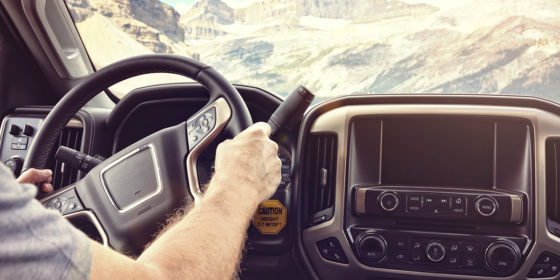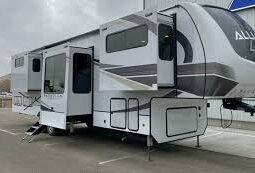6 Mistakes to Avoid When Driving Your RV
3 min read
Driving an RV, especially larger units like motorhomes, travel trailers or fifth wheels, is very different from driving a car. So the mistakes are understandable. Like driving too fast. Or failing to give yourself enough time to turn or change lanes. Or not getting enough rest. All of these are among the most common causes of accidents involving RVs.
So, to help you avoid costly errors, RVT is happy to share six mistakes to avoid when driving your RV.
Not Keeping Your RV in Good Condition
A mechanically sound RV that’s regularly maintained makes a good travel companion. Failing to keep your RV in good condition changes that equation. It can cause breakdowns, or even accidents, when you’re on the road. Perform a general inspection and make sure all systems are working properly before you head out. Check your tire pressure and tread. Top up your fluids, make sure your gas tank is full and your oil is in good shape. Once you’ve checked everything over and made necessary repairs, you’re ready to roll.
Not Enough Practice Driving Your RV
All drivers need practice when they start out — and RV drivers are no exception. While you don’t need a special license to drive an RV, it’s a good idea to get comfortable with your rig before hitting the road. Case in point: backing up. Going reverse in an RV is very different from backing up a car. It takes practice to get it right, and it’s best not to have your first time be in a tight camping spot (with the whole campground watching). To build extra confidence, see if RV driving lessons are offered in your area.
Not Adjusting Your Mirrors Properly
RVs are longer and wider than most other vehicles, making it easier for traffic to be in your blind spot. (Plus, unless you’re in some select Class Bs, there’s no rearview mirror.) Using your backup camera and having properly adjusted mirrors can reduce the chance of accidents. Practice helps your eyes learn to reflexively go to the right place.
Overloading Your RV
An overloaded RV increases the risk of tire blowout and damage to your rig. Keep your RV loads within the manufacturer’s recommended limits to ensure safety. It’s safer for you, your passengers and everyone else on the road. Also, make sure the weight in your rig is distributed evenly. An unbalanced load can cause your vehicle to pull in one direction which could increase your risk of an accident — or a dreaded blowout.
Not Allowing Enough Time for Stopping or Turning
An RV is larger and heavier than your standard vehicle. That means it takes more time to speed up, slow down, and turn. Give other drivers plenty of space and clearly indicate your intent while you still have distance. Use turn signals well in advance and make sure you’re in the correct lane before you need to be. Remember, your RV makes wider turns than your regular automobile, so don’t take corners too sharply.
Not Getting Enough Rest
Drivers often forgo rest in order to get to their destination more quickly, making driver fatigue one of the top causes of RV accidents. Using the 2/2/2 rule can help reduce exhaustion and increase your safety. Limit your driving distance to 200 miles (322 km) per day, arrive by 2 p.m., and stay at least two nights. Restricting your driving distance will help you stay alert, and you’ll have plenty of time to find a spot and set up. Plus, you’ll get to enjoy at least one full day at your site.
Using these tips will help keep you, your passengers, and other drivers safe as you travel to your next destination. If you’re looking for a new or used Class A, Class B or Class C motorhome, or any other RV, check out the latest listings at RVT.com.



